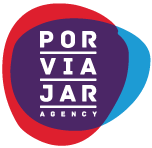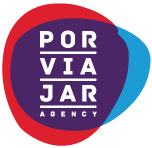Modelo Learning Agreement
Modelo Learning Agreement: A Comprehensive Guide
As the world of education is constantly evolving, it is crucial to keep up with the latest trends and practices. One of the most effective ways of doing so is by implementing a Modelo Learning Agreement (MLA).
What is Modelo Learning Agreement?
The Modelo Learning Agreement is a document that sets out the goals, learning outcomes, and responsibilities of all parties involved in a learning activity. It is designed to ensure that students receive the best possible learning experience, while also providing a framework for educators to deliver their courses effectively.
In essence, the MLA is a contract between the teacher and the student, outlining the expectations required for a successful learning experience. It’s a tool that can be used in formal and informal learning settings, including higher education, vocational training, and adult education.
Why is it important?
The MLA is an essential tool for both educators and students. It provides a clear definition of the roles and responsibilities of all parties involved, thus helping to avoid misunderstandings and conflicts. It also ensures that the learning process is organized and structured, which is beneficial for both parties.
For students, the MLA is a useful tool for setting out their aims and objectives for the learning experience. It enables them to take responsibility for their learning and progress and sets out the expected outcomes. This helps in the planning and organization of learning activities, ensuring that they are aligned with the learning objectives.
For educators, the MLA provides a framework to structure learning activities around the defined objectives. It helps to identify the necessary resources, methods, and content required for the learning experience. It also provides a benchmark to evaluate the effectiveness of the learning activities.
How to create an MLA?
Creating an MLA requires a collaborative effort between the teacher and the student. The process typically involves the following steps:
1. Define the learning objectives: The first step is to define the learning objectives. This involves setting out the topics to be covered, the expected outcomes, and the timeframe.
2. Agree on roles and responsibilities: The next step is to agree on the roles and responsibilities of all parties involved. This includes the teacher, the student, and any external stakeholders.
3. Identify resources: The next step is to identify the resources required for the learning experience. This includes both physical resources such as books, materials, and software, as well as human resources such as mentors, tutors, and other support staff.
4. Define evaluation criteria: The next step is to define the evaluation criteria for the learning experience. This involves setting out how the learning outcomes will be assessed and evaluated.
5. Sign the agreement: Once the MLA is created, both parties sign the agreement. This formalizes the commitment of all parties involved and provides a reference point for the learning process.
Conclusion
In conclusion, the Modelo Learning Agreement is an essential tool for ensuring effective and structured learning experiences. It helps to define the objectives, roles, and responsibilities of all parties involved, providing a framework for the learning process. Creating an MLA requires a collaborative effort between the teacher and the student, and it is essential to review and update it regularly to ensure its effectiveness. By implementing an MLA, educators and students can optimize the learning experience and improve learning outcomes.

